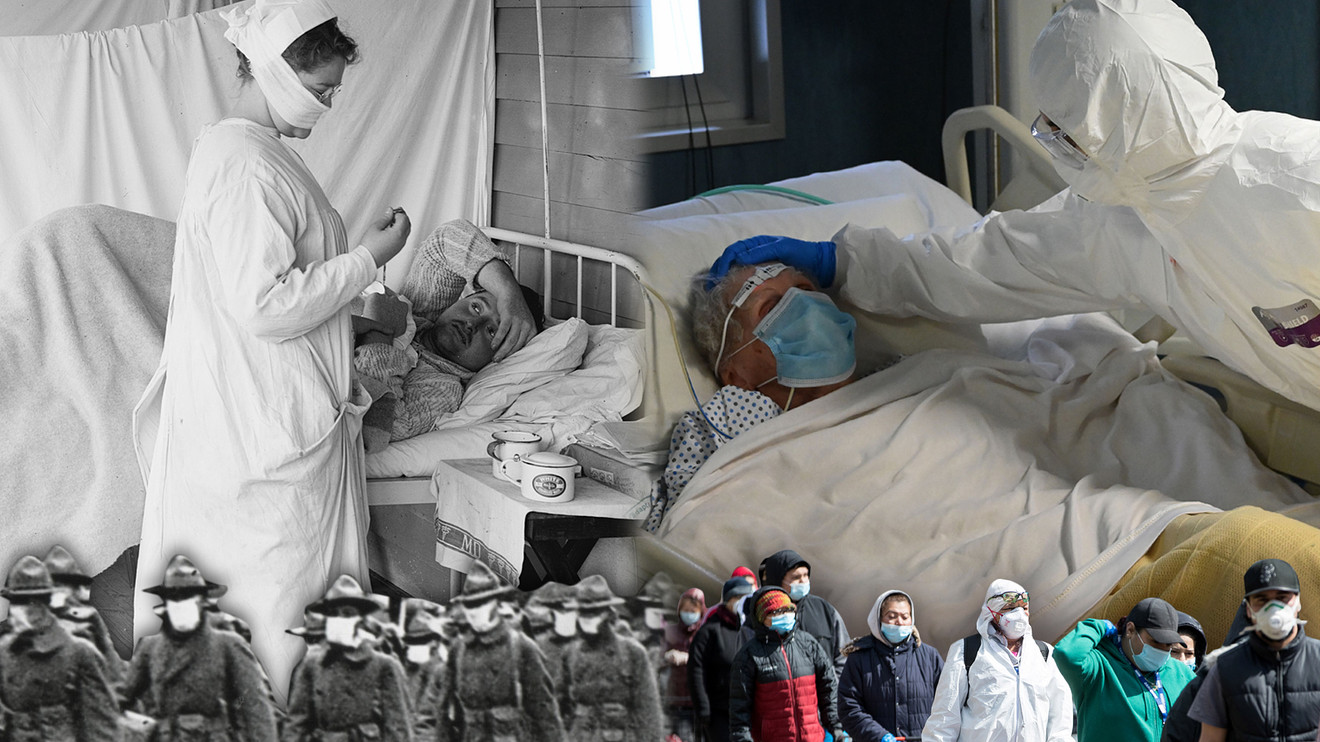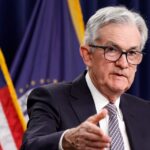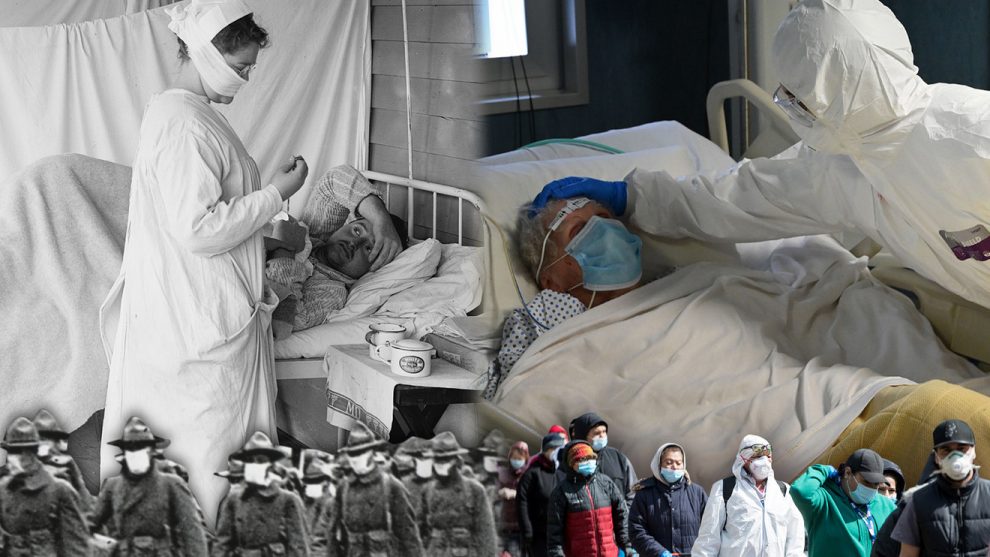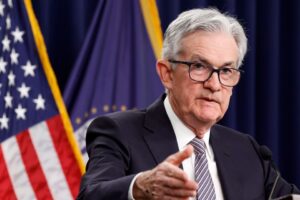
America is staring down a widespread COVID-19 testing shortage with no vaccine in sight. So what happens when coronavirus makes its unceremonious return?
On Monday, Mike Ryan, executive director of the World Health Organization’s Health Emergencies Program and former epidemiologist specializing in infectious disease and public health, warned Monday of complacency surrounding relaxation of social distancing measures.
“ Countries must ‘ensure that we continue on a downwards trajectory, and we don’t have an immediate second peak.’ ”
Countries should “continue to put in place the public-health and social measures, the surveillance measures, the testing measures and a comprehensive strategy to ensure that we continue on a downwards trajectory, and we don’t have an immediate second peak,” he told reporters.
He defined a second wave thus: “There will be a first wave of the disease by itself, and then it recurs months later, and that may be a reality for many countries in a number of months’ time.” He warned Brazil, No. 2 behind the U.S. with the most cases, not to relax measures until it has more testing.
As of Tuesday, there were 391,222 confirmed cases in Brazil and at least 24,512 deaths; there are 1,680,680 confirmed cases of COVID-19 in the U.S., and 98,902 deaths. Worldwide, there were 5,588,400 confirmed cases and 350,417 deaths, according to Johns Hopkins University.
Robert Redfield, director of the Centers for Disease Control and Prevention, told the Financial Times that he “can’t guarantee” more stay-at-home requirements in the winter or the fall. “We are committed to using the time that we have now to get this nation as over-prepared as possible.”
“We’ve seen evidence that the concerns it would go south in the southern hemisphere like flu [are coming true], and you’re seeing what’s happening in Brazil now,” Redfield told the U.K. paper, “and then when the southern hemisphere is over I suspect it will re-ground itself in the north.”
“This simple respiratory viral pathogen has really brought my nation to its knees, and the reality is, it’s no one particular person’s fault,” he added. (A Columbia University study released this week said up to 36,000 lives could have been saved had U.S. economy shut down even one week earlier.)
“ ‘We are committed to using the time that we have now to get this nation as over-prepared as possible.’ ”
Anthony Fauci, director of the National Institute of Allergy and Infectious Diseases for more than three decades, previously declared, “We will have coronavirus in the fall. I am convinced of that.” He previously said the “ultimate game changer” will be a vaccine, but that could take 12 to 18 months.
“If we’re not expecting a second wave or a mutation of this virus, then we have learned nothing,” New York Gov. Andrew Cuomo, CMCSA, +2.01% added, calling it a “new normal” for public health in the U.S. “That is why it is such an important period for government.”
First, the bad news: “The four seasonal coronaviruses do not seem to induce long-term immunity,” said Gregory Poland, who studies the immunogenetics of vaccine response in adults and children at the Mayo Clinic in Rochester, Minn., and expert with the Infectious Diseases Society of America.
“We will not have a vaccine by next winter,” Poland added. “The Southern Hemisphere is just starting their fall and winter. They will have a severe course of this disease due to less preparedness, less medical infrastructure and less public infrastructure.”
“There’s a possibility that the assault of the virus on our nation next winter will actually be even more difficult than the one we just went through,” Redfield, the CDC director, previously told The Washington Post.
Letter from New York:‘When I hear an ambulance, I wonder if there’s a coronavirus patient inside. Are there more 911 calls, or do I notice every distant siren?’
Coronavirus immunity differs from other diseases. Immunizations against smallpox, measles or Hepatitis B should last a lifetime, Poland said. Coronaviruses, first discovered in the 1960s, interact with our immune system in unique and different ways, he added.
How do other coronaviruses compare to SARS-CoV-2? People infected by SARS-CoV, an outbreak that centered in southern China and Hong Kong from 2002 to 2004, had immunity for roughly two years; studies suggest the antibodies disappear six years after the infection.
For MERS-CoV, a coronavirus that has caused hundreds of cases in the Middle East, people retain immunity for approximately 18 months — although the long-term response to being exposed to the virus again may depend on the severity of the original infection.
The world, Poland said, should brace itself for round two: “We will start moving into our summer when they’re moving into their winter,” he said. “If, as is likely, we don’t restrict all travel, cases will start coming back into the Northern Hemisphere and we’ll have another outbreak this fall.”
It’s too early for ‘herd immunity’ to be effective
Without a vaccine, “herd immunity” is another option. That theory was briefly considered in the U.K. as an alternative to closing businesses and practicing social distancing, but was deemed too risky. Ultimately, enough people would need to be immune to shield the most vulnerable.
“There’s no chance that immunity is going to be high enough to reach herd immunity,” Poland said. “With influenza, you need herd immunity of 60% to 70%. With measles, you need about 95%. With COVID-19, it’s somewhere in the middle.”
In the absence of a vaccine, Poland said several conditions are necessary for herd immunity to work: a very high level of population immunity, for that immunity to be durable, and for the virus to not mutate. “None of those seem to be operational at present,” he said.
“ With influenza, you need herd immunity of 60% to 70%. With measles, you need about 95%. With COVID-19, it’s somewhere in the middle. ”
In addition to the level of herd immunity (or lack thereof) to protect those who are most vulnerable, people will have to be cognizant of the disease spreading through asymptomatic carriers — that is, people who are infected but show no signs that they’re ill.
For example, a New England Journal of Medicine study published this month found that 29 (or 14%) of 210 pregnant women arriving at New York–Presbyterian Allen Hospital and Columbia University Irving Medical Center tested positive for COVID-19, yet displayed no symptoms.
“Our use of universal SARS-CoV-2 testing in all pregnant patients presenting for delivery revealed that at this point in the pandemic in New York City, most of the patients who were positive for SARS-CoV-2 at delivery were asymptomatic,” the study concluded.
“It underscores the risk of Covid-19 among asymptomatic obstetrical patients,” added the study, which was published earlier this month. “Moreover, the true prevalence of infection may be underreported because of false negative results of tests to detect SARS-CoV-2.”
Lessons in immunity from the Spanish flu of 1918
So what will happen if or when SARS-CoV-2, which causes the respiratory disease COVID-19, returns? “We’re just 14 weeks into this, so no one knows,” Poland said. If it has a slight mutation, he added, the response of our antibodies will be “moderately irrelevant.”
We can’t expect to have the same “herd immunity” or “original antigenic sin” — the ability of our immune systems to remember a virus that is similar, but not the same, as a previous version — as influenza. Influenza, after all, has been around for 500, if not 1,000 years.
“During the great influenza pandemic of 1918, the age group that disproportionately died were young people, not older adults,” Poland said. “Older adults had seen previews of this virus in earlier years, probably in the late 1800s, so they had immunological memory.”
“ ‘The 1918 Spanish flu’s second wave was even more devastating than the first wave. COVID-19’s sweet spot could be October to May.’ ”
There are similarities between influenza and SARS-CoV-2, and they have almost identical symptoms — fever, coughing, night sweats, aching bones, tiredness, and nausea and diarrhea in the most severe cases. Like all viruses, neither are treatable with antibiotics.
They can both be spread through respiratory droplets from coughing and sneezing, but they come from two different virus families — and ongoing research to develop a universal vaccine for influenza shows how tricky both influenza viruses and coronaviruses can be.
“The 1918 Spanish flu’s second wave was even more devastating than the first wave,” Ravina Kullar, an infectious-disease expert with the Infectious Diseases Society of America and adjunct faculty member at the University of California, Los Angeles, told MarketWatch.
Historians believe that a more virulent influenza strain hit during a hard three months in 1918 and was spread by troops moving through Europe during the First World War. A mutated strain would be a worst-case scenario for a second wave of SARS-CoV-2 this fall or winter.
The 1918 pandemic is forever associated with Spain, but this strain of H1-N1 was discovered earlier in Germany, France, the U.K. and the U.S., but similar to the Communist Party’s response to first cases of COVID-19 in Wuhan, China, First World War censors buried or underplayed those reports.
”It is essential to consider the deep connections between the Great War and the influenza pandemic not simply as concurrent or consecutive crises, but more deeply intertwined,” historian James Harris wrote in an essay on the pandemic.
“ A more virulent, mutated strain of the novel coronavirus would be a worst-case scenario for a second wave of SARS-CoV-2 this fall or winter. ”
The British military medicine took a leading role in studying the public-health response, he added. “Domestic public-health leaders did almost nothing to stem the spread of the pandemic due to the impact measures such as quarantine would have had on the war effort.
Doctors and members of the public, as of now, were spooked by how otherwise strong, healthy people fell victim to the 1918 influenza. Doctors today attribute that to the “cytokine storm,” a process where the immune system in healthy people reacts so strongly as to hurt the body.
A hallmark of some viruses: A surge of immune cells and their activating compounds (cytokines) effectively turned the body against itself, led to an inflammation of the lungs, severe respiratory distress, leaving the body vulnerable to secondary bacterial pneumonia.
And the second wave of SARS-CoV-2? “It will likely hit harder in areas not severely impacted the first time in the interior of the U.S., where there’s a lot more susceptible people,” Kullar said. “COVID-19’s sweet spot could be October to May, with it peaking, likely, in October and November.”
Kullar said scientists are learning something new every day from modeling studies. “If it follows the same pattern as influenza, it will likely level off during the summertime,” she said. “If immunity is in existence, then likely the virus will come back looking for new victims.”
What’s more, Redfield told the Washington Post that he’s been in talks with state officials about the potential for using U.S. Census Bureau, Peace Corps and AmeriCorps volunteers to create what he called “an alternative workforce” to help with contact tracing for those who test positive.
Testing will determine the rate of asymptomatic carriers
There is reason to be optimistic. “We still have a lot to learn about the flu, even though we’ve had flu vaccines since the mid-1940s,” Poland said. “It’s amazing what the world has done in 14 weeks on COVID-19, but what’s more amazing is how much more there is to learn.”
In a few short months, scientists around the world have learned a lot about SARS-CoV-2, including the virus’s genetic structure; how it infects human cells; what kind of disease manifestation it causes; and how it impacts the liver, kidney and brain, and how secondary symptoms affect children.
“ ‘We really need to have wide-scale testing available, and contact tracing to find everyone who has been exposed.’ ”
What else, aside from social distancing to “flatten the curve” of new infections, can be done between now and then? While scientists work to crack the code of the novel coronavirus, the government and members of the public can work together.
“It all comes down to testing,” Kullar said. “We really need to have wide-scale testing available, and contact tracing to find everyone who has been exposed and get them to self-isolate for 14 days. We don’t have a system like that in the U.S. at present.”
Cuomo said he won’t be swayed by protesters in the capital, adding that the CDC set reopening guidelines for states, and he will close again after reopening, if need be. “The health-care system cannot go over 70% capacity. There’s a two-week lag. At 70%, bells should go off.”
Dispatches from a pandemic: New York’s empty streets remind me of my childhood in a Wild West ghost town — how America can revive itself post-pandemic
Assuming testing is up to speed by the end of summer, Kullar says Americans should be on a sound footing for round two of SARS-CoV-2 with, ideally, enough hospital supplies and testing in place to ensure we all make fewer mistakes next time around.
In Europe, Andrea Ammon, director of the European Centre for Disease Prevention and Control, told The Guardian newspaper this month that she too expects a second wave. “The question is when and how big,” she said, adding that 85% to 90% of the population is still susceptible.
Ammon said SARS-CoV-2 is unlikely to just go away. “The virus is around us, circulating much more than January and February,” she said this week. “I don’t want to draw a doomsday picture but I think we have to be realistic. That it’s not the time now to completely relax.”
The Dow Jones Industrial Index DJIA, +2.16% and S&P 500 SPX, +1.22% were up Tuesday. Equity indexes ended last week with strong gains as the markets remained hopeful of a short-term impact of coronavirus on earnings, helped by progress on research into a vaccine.
In the meantime, a lot will come down to the public. “How we behave will really determine how big this virus is going to get,” she said. “Maintain social distancing and wear masks in public until we see infection rates go down, and keep doing it until we get enough testing.”











Add Comment